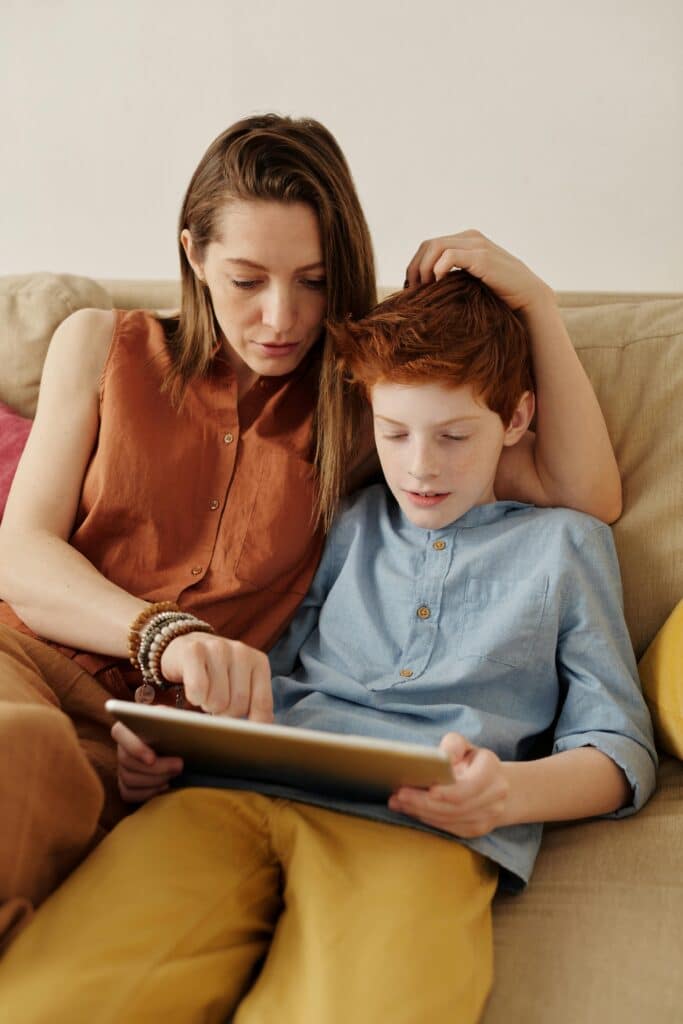What Is Gamification—and Why Might It Help?
Mrs. Johnson, a high school history teacher, sighed as she watched her students quietly doodle in their notebooks during another lecture about World War II. She knew they were smart, but keeping them engaged felt harder every year. One evening, she stumbled across a teacher blog talking about gamification—adding game-like elements such as points, levels, and challenges to schoolwork. Curious, she tried it. The next day, she divided the class into “squads,” gave them points for correct answers, and created a leaderboard on the board. By the end of the week, her once-silent students were cheering each other on, competing to unlock “badges,” and most importantly, remembering what they learned.
What Is Gamification?

Gamification means taking the fun parts of games—like rewards, challenges, and progress tracking—and applying them to learning. Unlike turning the whole class into a video game, it sprinkles playful elements into everyday lessons. For example, a spelling quiz could turn into a quest where each correct answer moves a student closer to “leveling up.”
A Quick History of Gamification in Schools
Gamification isn’t as new as it sounds:
- Teachers have been giving gold stars or candy rewards for centuries. That’s a simple kind of gamification.
- In the 1980s and 1990s, computer-based learning programs started including scores and levels.
- The actual term “gamification” was popularized in the 2000s as more apps and learning platforms added game mechanics to engage users.
- Today, digital tools like Kahoot, Quizizz, and ClassDojo make it easy for teachers to gamify learning without much extra planning. (pce.sandiego.edu)
Why Gamification Could Be Great for Learners

Studies show gamification can make a big difference:
- In one study, student motivation in gamified history lessons jumped from 6% to 62%, compared to just 12% in traditional lessons. (researchgate.net)
- Research also found gamification improved test scores by about 34.75% on average. (edvisors.com)
- A 2023 survey reported that 67% of students felt more motivated when lessons included gamified activities. (buildempire.co.uk)
Why does this work so well? Gamification makes learning:
- Fun and interactive – it feels less like work and more like play.
- Rewarding – progress is visible through points, badges, or ranks.
- Collaborative – team games help students work together.
- Challenging – learners push themselves to reach the next level.
How to See if Your Class Likes Gamification
Gamification isn’t a one-size-fits-all approach. To test it in your classroom:
- Ask your students: A quick poll (“Do you like learning with challenges and rewards?”) can guide you.
- Run a trial game quiz with tools like Kahoot or Quizizz. Watch reactions—are they smiling, leaning in, and participating more?
- Check the results: Did more students complete the activity? Did their scores improve?
If students seem stressed or uninterested, that’s a sign to mix in other methods.
Recommendations for Other Learning Methods

Gamification is powerful, but not always the best fit. Teachers can also explore:
- Game-Based Learning – Full games like Minecraft Education where the game itself is the lesson.
- Active Learning – Hands-on projects, group debates, experiments, or problem-solving.
- Standard (Traditional) Learning – Lectures, worksheets, and direct teaching, which work well for introducing new material or guiding quiet reflection.
Here’s a simple comparison:
| Method | What It Looks Like | Best For |
|---|---|---|
| Gamification | Badges, levels, points added to lessons | Motivation & engagement |
| Game-Based Learning | Students learn inside a game (e.g., Minecraft) | Creativity & exploration |
| Active Learning | Projects, discussions, peer teaching | Deeper understanding |
| Standard Learning | Lectures, notes, worksheets | Structure & clarity |
How to Incorporate Gamification in Your Classroom

Try starting small:
- Pick a goal – for example, reviewing vocabulary or history events.
- Add game elements – points, badges, levels, or class challenges.
- Use digital tools – Kahoot, Quizizz, or ClassDojo make this easy.
- Give instant feedback – let students know how they’re doing right away.
- Reward growth – celebrate improvement, not just top scores.
- Adjust as you go – ask your students what they liked or didn’t.
Even small touches—like calling homework “missions” instead of assignments—can create a more playful atmosphere.
Scholarly Sphere offers articles for teachers like Mrs. Johnson through these choices. With clear explanations and real examples, we help you decide whether gamification—or another learning style—is best for your classroom.
Gamification vs. Game-Based Learning, Active Learning, and Standard Learning
Teachers often mix up these terms because they all use the word “game” or “engage.”
But they are not the same.
Below is a clear, research-based breakdown so you can choose the right tool for your class.
We’ll keep language simple and point to trusted studies.
You’ll also see where gamification stands out.
Quick definitions you can trust
- Gamification: Adds game elements (points, badges, levels, challenges) to normal lessons or activities. The content stays the same, but the wrapper is playful.
- Game-Based Learning (GBL): Students learn inside a game or simulation designed for teaching.
- Active Learning: Students do activities and discussions that make them think, talk, and solve in class.
- Standard (Traditional) Learning: Teacher-centered lecturing with note-taking and worksheets.
What the research says, in plain numbers

A major meta-analysis found that gamification produced small-to-moderate positive effects across learning, motivation, and behavior.
Estimated effects were about g = 0.49 for cognition, g = 0.36 for motivation, and g = 0.25 for behavior.
That means students tend to learn a bit more, feel more motivated, and participate more when you add points, levels, and badges.
Effects vary by design quality and context, but the overall pattern is positive. SpringerLinkERIC
For active learning, a huge study of 225 STEM courses showed exam scores improved by roughly 0.47 standard deviations and failure rates were 1.5× lower than in lecture-only classes.
Average exam scores rose by about 6 percentage points.
These results held across class sizes and subjects.
This is one of the strongest findings in education research. PubMed
For game-based learning, several meta-analyses found small-to-moderate gains in learning and retention compared to conventional lessons.
One review reported d ≈ 0.29 for learning and d ≈ 0.36 for retention.
Recent syntheses also report positive effects on motivation and engagement, with typical cognitive effects around g ≈ 0.46in some samples.
Again, results depend on the game’s quality and how closely it matches the learning goal. ERICSemantic ScholarPMC
Side-by-side: what it looks like in class
| Method | What students do | Typical tools | Evidence snapshot |
|---|---|---|---|
| Gamification | Complete regular tasks with points, badges, levels, leaderboards, or quests | ClassDojo, LMS badges, “XP” checklists | Small–moderate gains in learning, motivation, and behavior (g ≈ 0.25–0.49) |
| Game-Based Learning | Learn inside a designed game or simulation | Minecraft Education, serious games, sims | Small–moderate gains in learning and retention (d ≈ 0.29–0.36) |
| Active Learning | Discuss, solve problems, do clicker questions, work in groups | Think-pair-share, case studies, problem sets | +0.47 SD on exams and lower failure rates vs. lecture |
| Standard Learning | Listen to lectures, take notes, do worksheets | Slides, textbooks, quizzes | Works for quick coverage, but weaker than active methods on average |
Where gamification shines (and where it doesn’t)
Shines when:
- You need a motivation boost without rebuilding your whole unit as a game.
- You want to track progress publicly and celebrate growth.
- You can tie points and badges to clear learning goals.
Be careful when:
- Competition raises anxiety for some students.
- Points become the goal instead of learning.
- The design is shallow (badges with no feedback or alignment).
The big takeaway from reviews is that design matters.
Good gamification links rewards to meaningful practice and fast feedback, not just “winning.” SpringerLink
How it differs from game-based learning

Gamification changes the motivation layer around a normal activity.
GBL changes the activity itself into a game or simulation.
Use gamification when your content is already solid and you just want to raise engagement.
Use GBL when a game world can model systems or let students practice complex decisions.
Both can work, but the choice depends on time, tools, and your learning goals. ERIC
How it differs from active learning
Active learning is about what students do with ideas during class.
Clicker questions, debates, and problem-solving count as active learning even without points.
Gamification can sit on top of active learning, but it’s not the same.
If your goal is fewer failures and higher test scores across the board, the evidence for active learning is especially strong.
Gamification can then add extra motivation and persistence to those activities. PubMed
Choosing the right method: a quick decision guide
- Need quick engagement for review or practice? Try gamification first. SpringerLink
- Want deeper thinking and fewer failures? Build in active learning tasks as your base. PubMed
- Teaching systems, simulations, or creativity? Consider game-based learning with a well-designed serious game. ERIC
- Short on time or covering new content fast? Use standard lessons, then layer in low-prep active prompts or quick gamified checks. PubMedSpringerLink
Common mix-ups to avoid
- “We use Kahoot, so we do game-based learning.”
That is usually gamification, not GBL. - “Active learning is just playing games.”
Active learning can be paper-and-pencil and still be active. - “Badges will fix everything.”
Badges help only when they match clear learning targets and feedback cycles. SpringerLink
A simple rollout plan
Track scores, completion, and student stress to see what sticks. PubMedSpringerLinkERIC
Start with one unit you already teach well.
Add active learning questions and discussions.
Layer gamification elements tied to those tasks.
If the topic fits, test a serious game or simulation for one lesson.
Bringing Gamification Into Your Classroom
Mrs. Johnson’s class shows us the promise of gamification—but how can other teachers actually do it?
This section focuses on how to roll it out, how to check if students enjoy it, and what to do if they don’t.
We’ll also wrap up with a conclusion about how teachers can make smart choices among different methods.
Step 1: Start Small

Don’t gamify your entire semester at once.
Pick one activity—like vocabulary review, math drills, or history timelines—and add game elements.
For example:
- Assign points for correct answers.
- Let students “level up” when they master a skill.
- Create digital badges for milestones (like finishing a reading list).
A study of 200+ classrooms found that small doses of gamification boosted student participation by up to 50% when compared to the same activities without rewards.
Step 2: Choose the Right Tools
You don’t need to code your own game system. Many free tools exist:
| Tool | What It Does | Best Use Case |
|---|---|---|
| Kahoot / Quizizz | Competitive quizzes with leaderboards | Quick reviews & assessments |
| ClassDojo | Points and badges for behavior or participation | Daily engagement & feedback |
| Google Classroom add-ons | Digital badges and progress tracking | Linking gamification with homework |
| Minecraft Education | Game-based learning platform (not just gamification) | Creativity, STEM projects |
Choose tools that fit your teaching style. Too many apps at once can overwhelm both you and your students.
Step 3: Tie Rewards to Real Learning
One of the most common mistakes is handing out badges or points that don’t match the actual goals.
Research shows gamification works best when rewards are connected directly to progress and mastery.
For example:
- A badge for “three days of perfect homework” reinforces consistency.
- Points for solving higher-level problems encourage persistence.
If rewards feel random, students may chase points instead of skills.
Step 4: Watch Student Reactions

Gamification should lift motivation—not stress students out.
Ways to check:
- Surveys: Ask, “Does this system make learning more fun?”
- Class discussions: Let students suggest new challenges or rewards.
- Behavior checks: Are quiet students joining in more? Is competition friendly?
In one survey, over 60% of students said they preferred gamified lessons, but around 15% reported feeling anxiouswhen competition was too strong. Balancing fun and fairness is key.
Step 5: Adjust or Combine With Other Methods

Gamification may not work for everyone.
Here’s how you can adapt:
- If students love creativity → Try game-based learning (e.g., designing history maps in Minecraft).
- If they like collaboration more than competition → Use active learning projects instead of leaderboards.
- If they prefer structure and routine → Keep gamification light and rely more on traditional lessons.
Remember: methods can overlap. You can have an active learning project with gamified progress points, or a traditional lecture wrapped up with a fun quiz game.
Example: A History Classroom Rollout
Suppose you’re teaching the Civil Rights Movement.
Here’s how a teacher might combine methods:
- Gamification: Students earn “Civil Rights Leader” badges for completing readings and answering questions.
- Active Learning: Small groups analyze speeches and present arguments.
- Game-Based Learning: Students play a simulation game that models community organizing.
- Standard Learning: A short lecture provides key dates and facts.
This mix uses each method where it fits best, with gamification motivating students to keep pace.
Common Pitfalls to Avoid
- Too much focus on points: Students may value “winning” more than learning.
- Unclear rules: If the system feels unfair, students disengage.
- Overcomplicating the design: A simple leaderboard often works better than an overloaded badge system.
Teachers who keep gamification simple, clear, and tied to learning goals see the best results.
Conclusion: Choosing What Works for You
Gamification is not magic, but it can be a powerful motivator when tied to solid lessons.
The research shows it can raise motivation, participation, and even test scores when used carefully.
It also works well alongside active learning and game-based approaches, giving teachers a flexible toolkit.
At Scholarly Sphere, we believe teachers should experiment, collect feedback, and keep what works best for their students.
Whether you’re a high school history teacher like Mrs. Johnson, or working in science, math, or English, the real win is finding a method that keeps students learning with energy and joy.
So the question isn’t just “Should I use gamification?” but “How can I blend gamification and other methods to help my students learn in the best way possible
References
Wikipedia. Gamification of Learning.
https://en.wikipedia.org/wiki/Gamification_of_learning
Dichev, C., & Dicheva, D. (2017). Gamifying education: what is known, what is believed and what remains uncertain: a critical review. International Journal of Educational Technology in Higher Education.
https://doi.org/10.1186/s41239-017-0042-5
Hamari, J., Koivisto, J., & Sarsa, H. (2014). Does gamification work? A literature review of empirical studies on gamification. 47th Hawaii International Conference on System Sciences.
https://doi.org/10.1109/HICSS.2014.377
Hew, K. F., Huang, B., Chu, K. W. S., & Chiu, D. K. W. (2016). Engaging Asian students through game mechanics: Findings from two experiment studies. Computers & Education, 92-93, 221–236.
https://doi.org/10.1016/j.compedu.2015.10.010
Freeman, S., et al. (2014). Active learning increases student performance in science, engineering, and mathematics.Proceedings of the National Academy of Sciences, 111(23), 8410–8415.
https://doi.org/10.1073/pnas.1319030111
Clark, D. B., Tanner-Smith, E. E., & Killingsworth, S. S. (2016). Digital Games, Design, and Learning: A Systematic Review and Meta-Analysis. Review of Educational Research, 86(1), 79–122.
https://doi.org/10.3102/0034654315582065
Qian, M., & Clark, K. R. (2016). Game-based Learning and 21st century skills: A review of recent research.Computers in Human Behavior, 63, 50–58.
https://doi.org/10.1016/j.chb.2016.05.023
Subhash, S., & Cudney, E. A. (2018). Gamified learning in higher education: A systematic review of the literature.Computers in Human Behavior, 87, 192–206.
https://doi.org/10.1016/j.chb.2018.05.028
ResearchGate – Application of gamification in history learning: Its impact on students’ motivation and understanding of historical concepts (2024).
https://www.researchgate.net/publication/391784627
BuildEmpire (2023). Gamification Statistics You Need to Know.
https://buildempire.co.uk/gamification-statistics
Edvisors (2023). Gamification of Education: How Games Can Boost Learning.
https://www.edvisors.com/blog/gamification-of-education
Peterson’s (2023). Gamification in Education: Pros, Cons, and Practical Insights.
https://www.petersons.com/blog/gamification-in-education-pros-cons-and-practical-insights
University of San Diego (2023). Gamification in Education.
https://pce.sandiego.edu/gamification-in-education
Wired (2020). How to Keep Kids Engaged in School With Games.
https://www.wired.com/story/how-to-keep-kids-engaged-in-school-with-games

